Economy

Sheet Product Shipments and Supply Through January
Written by Peter Wright
March 16, 2020
Mill shipments of sheet products in January were the highest since August 2019.
This analysis is based on steel mill shipment data from the American Iron and Steel Institute (AISI) and import-export data from the U.S. Department of Commerce (DoC). This month we are producing a new report for long products and will follow this with data for plate and tubulars in subsequent months with the intention of providing subscribers with a more focused view of their products of interest.
The analysis summarizes total steel supply by product from 2008 through January 2020 and year-on-year changes. The supply data is a proxy for market demand, which does not take into consideration inventory changes in the supply chain. Our analysis compares domestic mill shipments with total supply to the market. It quantifies market direction by product and enables a side-by-side comparison of the degree to which imports have absorbed demand.
Figure 1 shows that the robust growth of U.S. raw steel production that occurred in 2018 reversed in 2019 until the week ending Oct. 5 when the trend again improved through the week ending Feb. 8. This is a four-week moving average and is based on weekly data from the AISI.
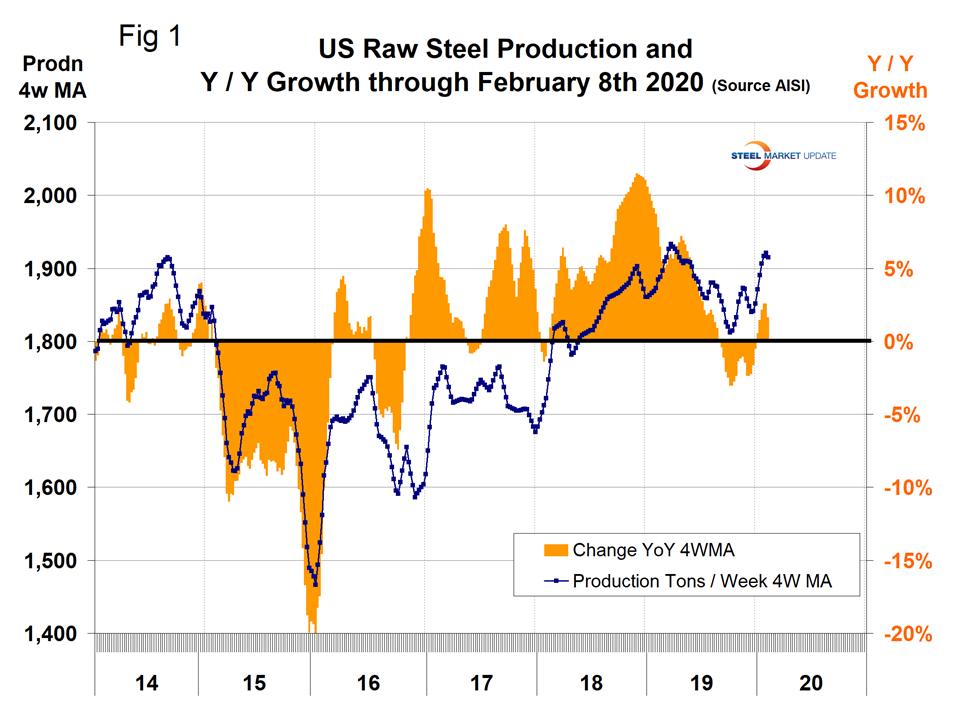
The shipments and supply report that you are reading now is based on monthly shipments by product as reported by the AISI, plus import and export data from the DoC. Figure 2 shows the monthly shipment data for all rolled steel products. In the long run the trajectories of growth in Figures 1 and 2 are comparable, but the decline in 2019 is less obvious in the monthly data.
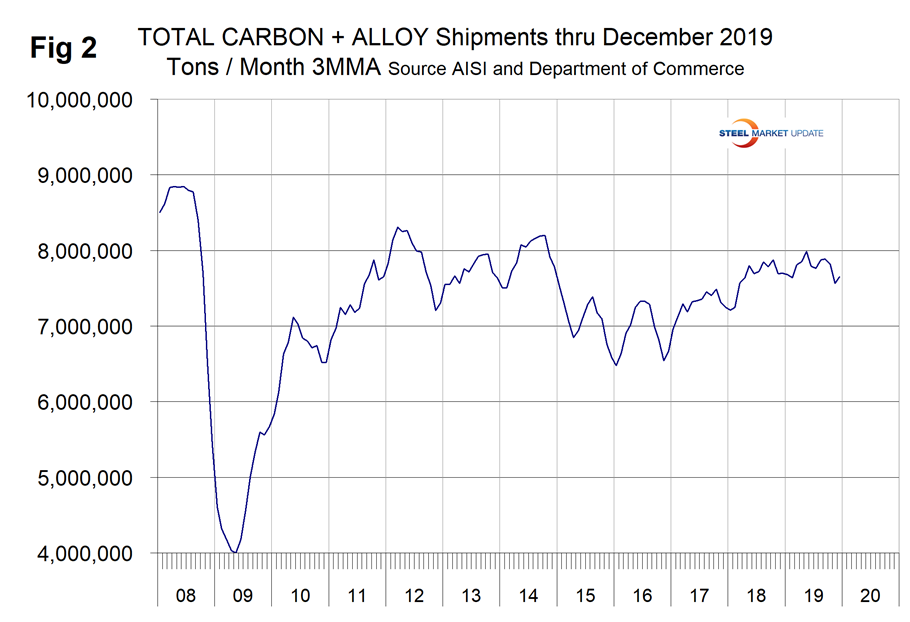
Table 1 looks at the shipment and supply situation for all product groups to see how much difference there is between them. Total supply (proxy for market demand) as a three-month moving average (3MMA) was down by 4.6 percent year over year, but mill shipments were up by 2.3 percent, meaning that imports took a smaller slice of the pie in the three months through January year over year. There is a big difference between products. Sheet products performed the best of the major product groups and tubulars the worst. The supply of sheet products was up by 2.4 percent in three months through January year-over-year and domestic mill shipments were up by 6.4 percent. The total of coiled and discrete plate supply was down by 13.3 percent and shipments were down by 6.4 percent.
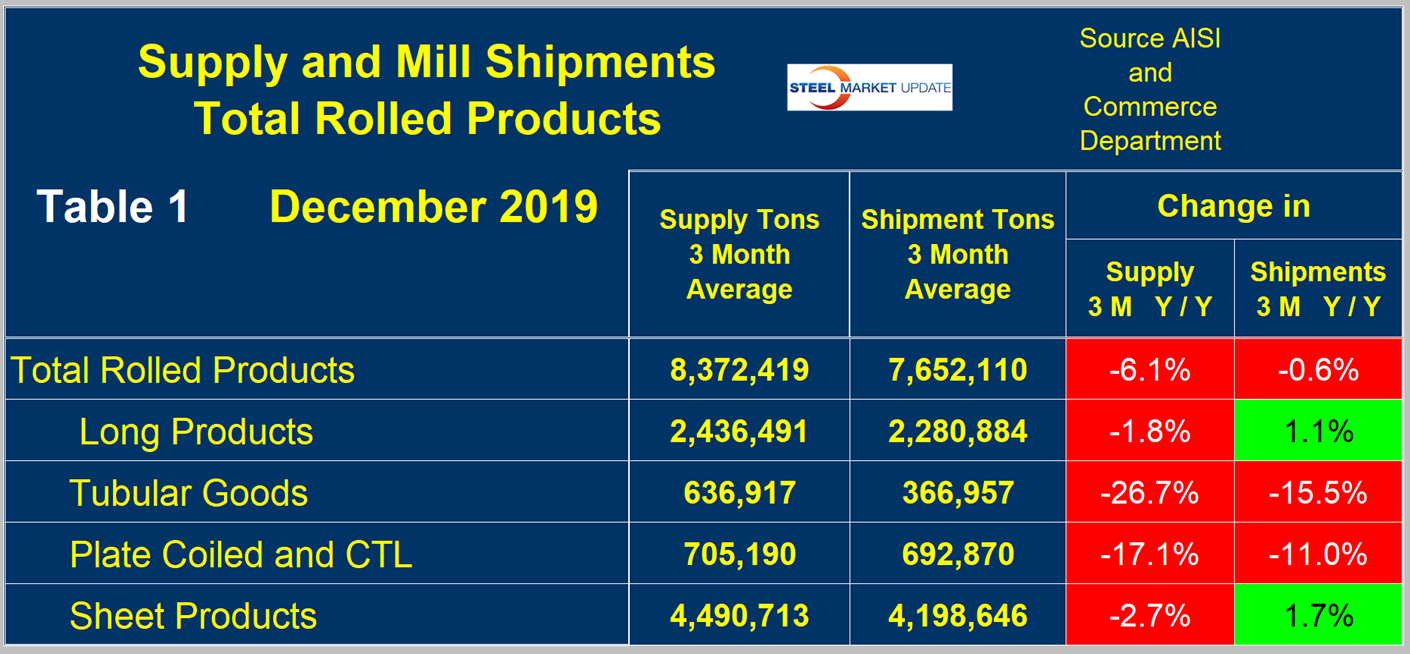
Seasonality of the demand of sheet products is significant with a 10-year historical average that varies by 11.4 percent between the high month of August and the low month of November. Over this 11-year period, April through July have been quite consistent as shown in Figure 3. On average since and including 2010, January has been up by 4.0 percent from December and this year was up by 11.0 percent.
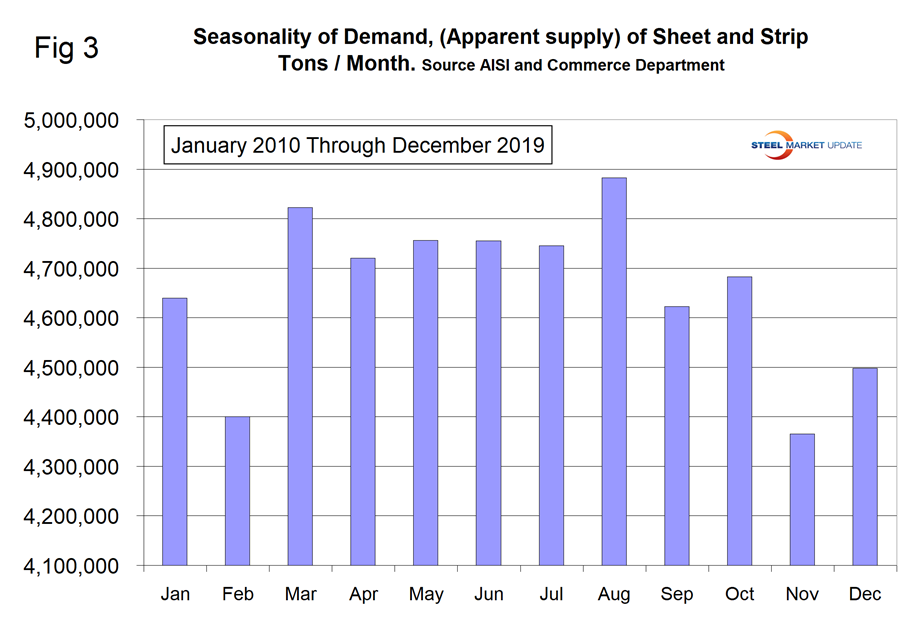
Table 2 describes both apparent supply and mill shipments of sheet products (shipments includes exports) side by side as three-month averages through January with year-over-year growth rates for each. Comparing the year-over-year time periods, total supply of sheet products to the market increased by 2.4 percent on a 3MMA basis and mill shipments increased by 6.4 percent. Table 2 breaks down the total into product detail and shows that both shipments and supply were up for hot rolled and other metallic coated, which is mainly Galvalume, but supply was down for cold rolled and galvanized products. Apparent supply is defined as domestic mill shipments to domestic locations plus imports. In the three months through January 2020, the average monthly supply of sheet and strip was 4.641 million tons. There is no seasonal manipulation of any of these numbers. By definition, year-over-year comparisons have seasonality removed.
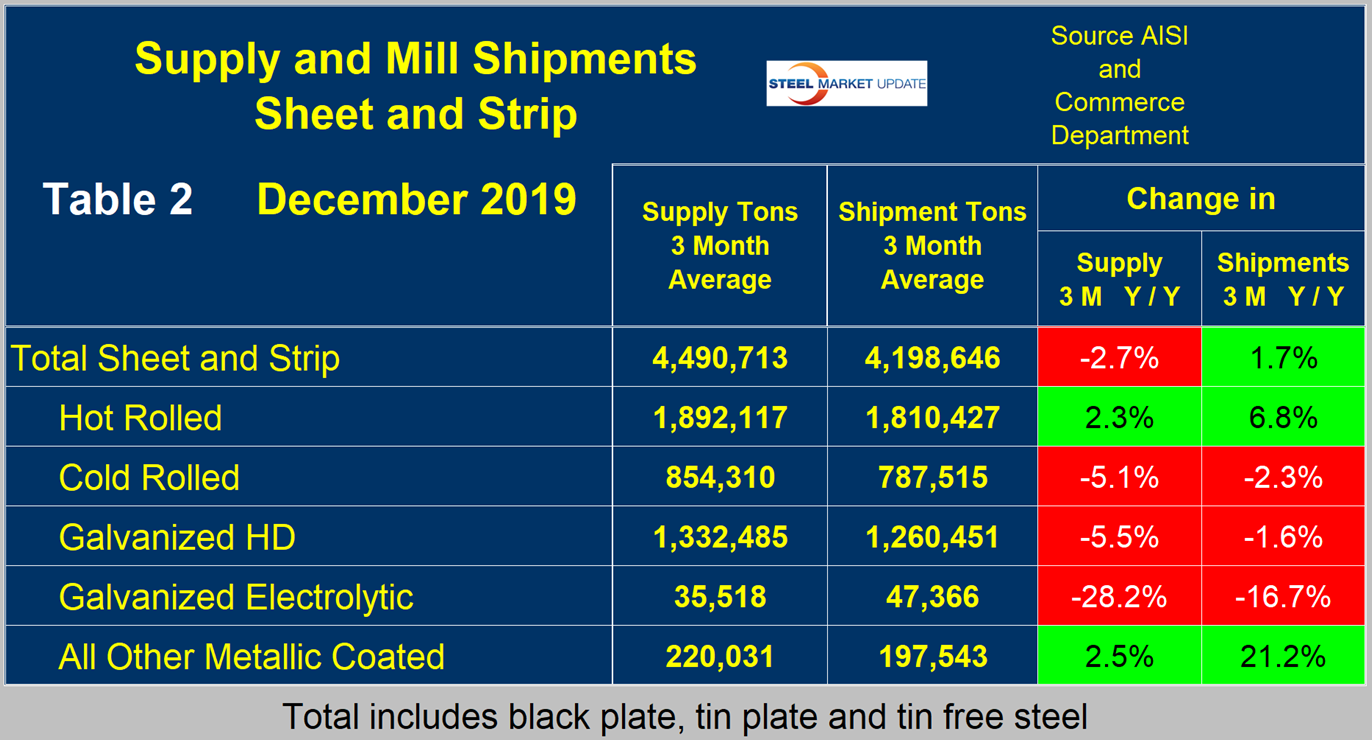
Table 3 shows that the total supply of sheet and strip products in January 2020 was up by 8.8 percent compared to 2019. All products except electrogalvanized were up year over year. In three months through January, compared to three months through October, total sheet products were down by 2.7 percent with only hot rolled coil being in positive territory. Comparing three months through January year over year, sheet products were up by 2.4 percent. Hot rolled and OMC were both up, but cold rolled and galvanized products were down. Table 3 shows the detail by individual sheet products.
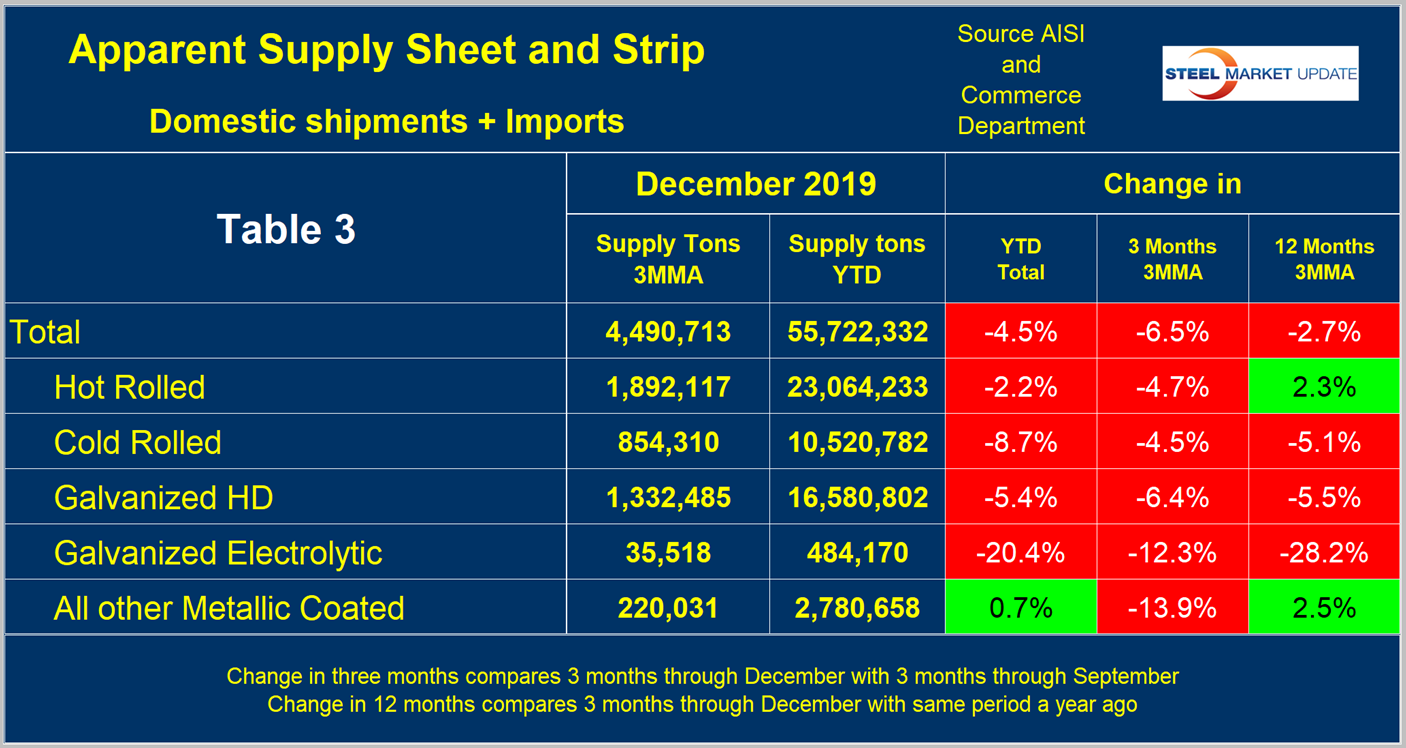
Figure 4 shows the long-term supply picture for the three major sheet and strip products, HRC, CRC and HDG, since January 2008 as three-month moving averages.
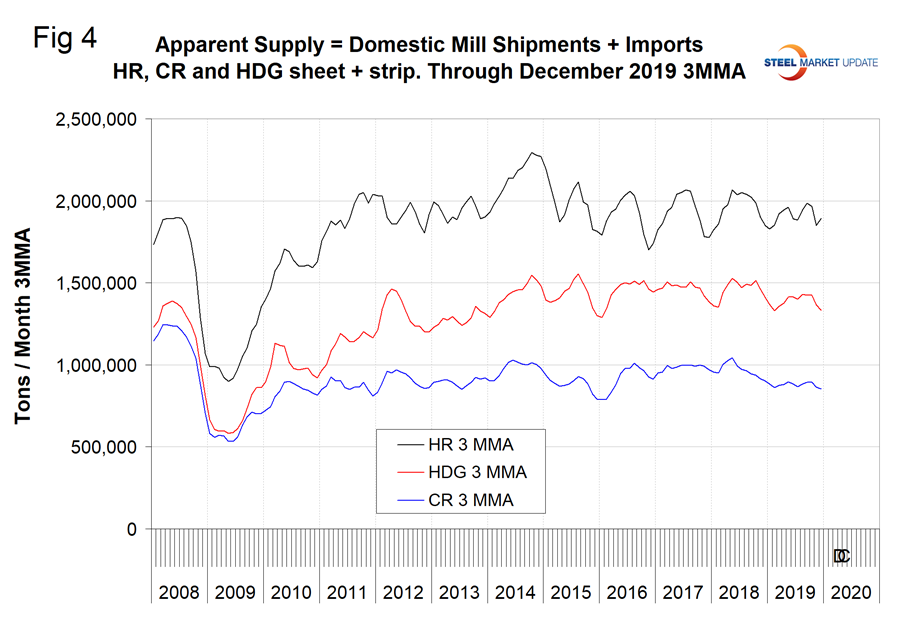
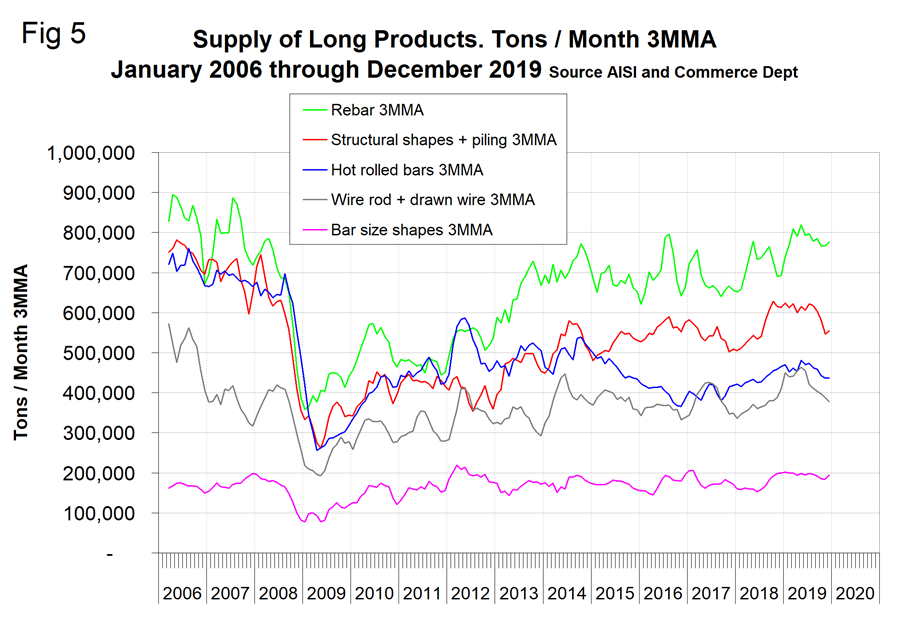
Figure 5 (above) shows the long-term comparison between flat and long products. These are monthly numbers (not 3MMA), and clearly show the trend difference between longs and flat products including plate. Flat rolled peaked in March 2018 and longs peaked in May 2019. The trend of flat rolled has been a decline since March 2018.
SMU Comment: The weekly numbers through March 7 for crude steel production declined year over year in the previous three weeks, but were still a healthy 1.9 million tons. The January results from the AISI were encouraging for sheet products. Mill shipments of total sheet and strip in January were the highest since August, which is historically the best month of the year. Looking forward, shipments will be impacted to an unknowable degree by the coronavirus’ effect on the economy.

Peter Wright
Read more from Peter WrightLatest in Economy

Industry groups praise Senate for passing tax and budget bill
The Steel Manufacturers Association and the American Iron and Steel Institute applauded the tax provisions included in the Senate's tax and budget reconciliation bill.

Chicago PMI dips 0.1 points in June
The Chicago Purchasing Managers Index (PMI) slipped 0.1 points to 40.4 points, in June.

Multi-family pullback drives housing starts to 5-year low in May
US housing starts tumbled in May to a five-year low, according to figures recently released by the US Census Bureau.

Architecture firms still struggling, ABI data shows
Architecture firms reported a modest improvement in billings through May, yet business conditions remained soft, according to the latest Architecture Billings Index (ABI) release from the American Institute of Architects (AIA) and Deltek.

Manufacturing in New York state contracts again
However, companies are growing more optimistic about the future.
